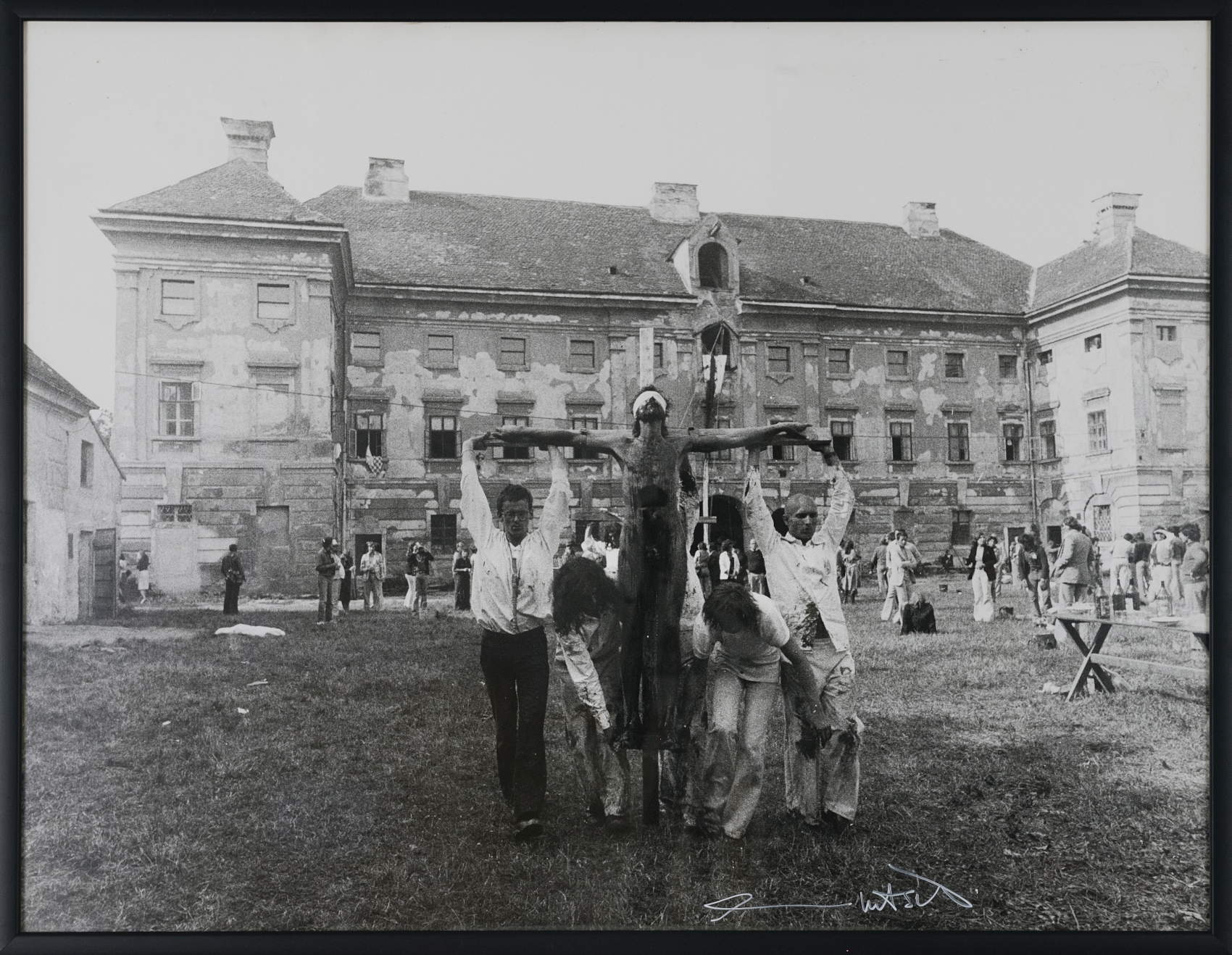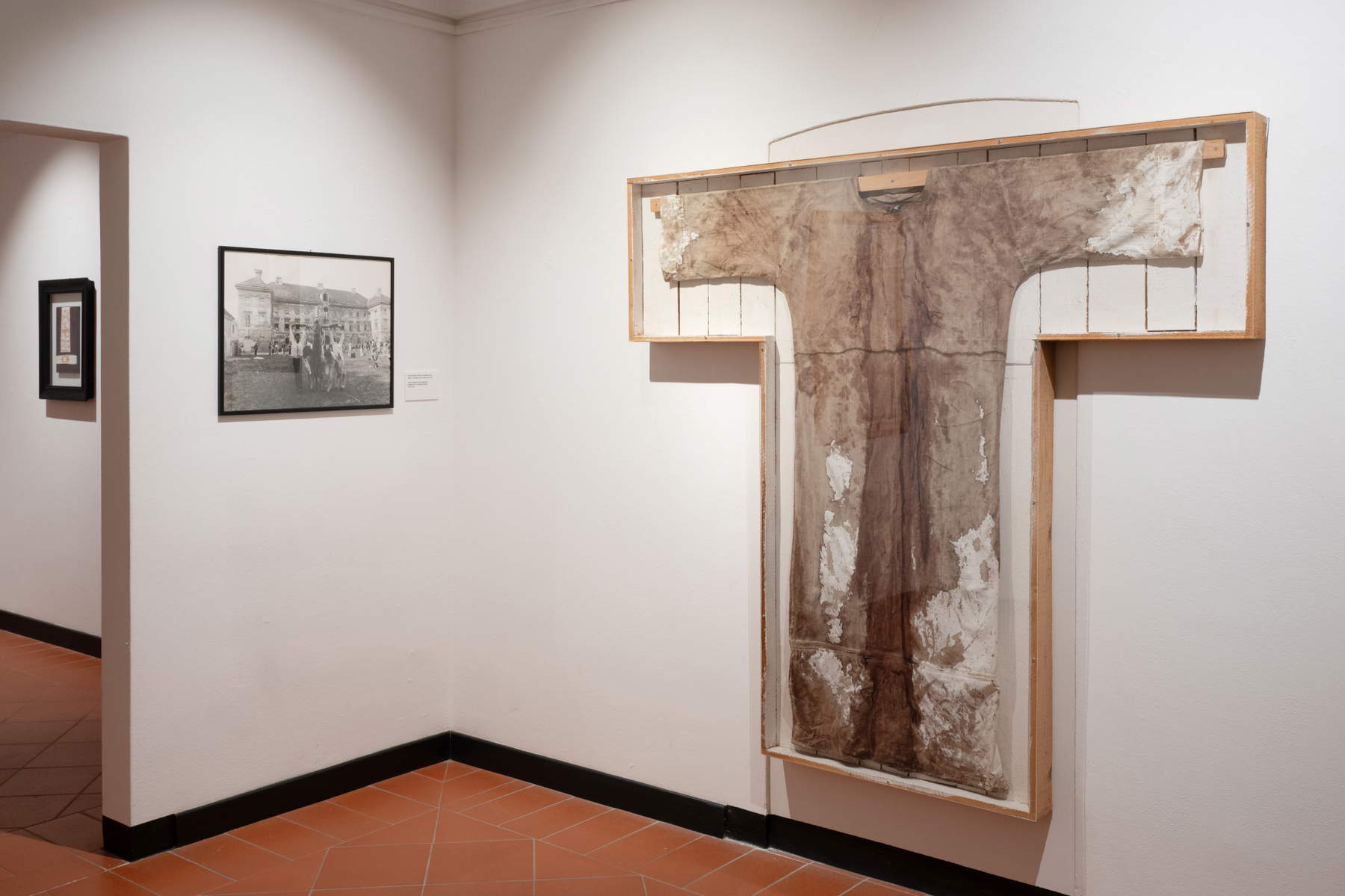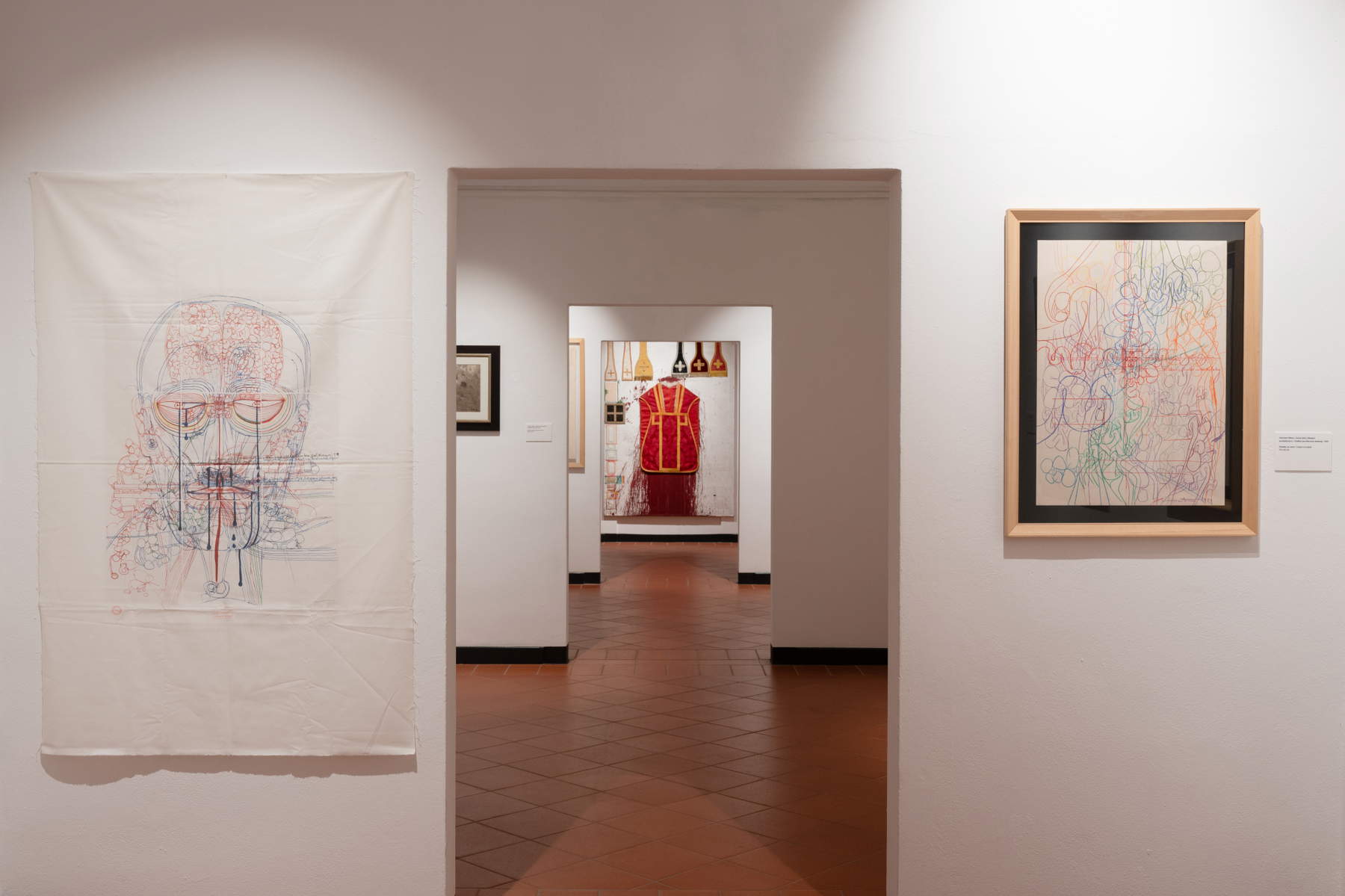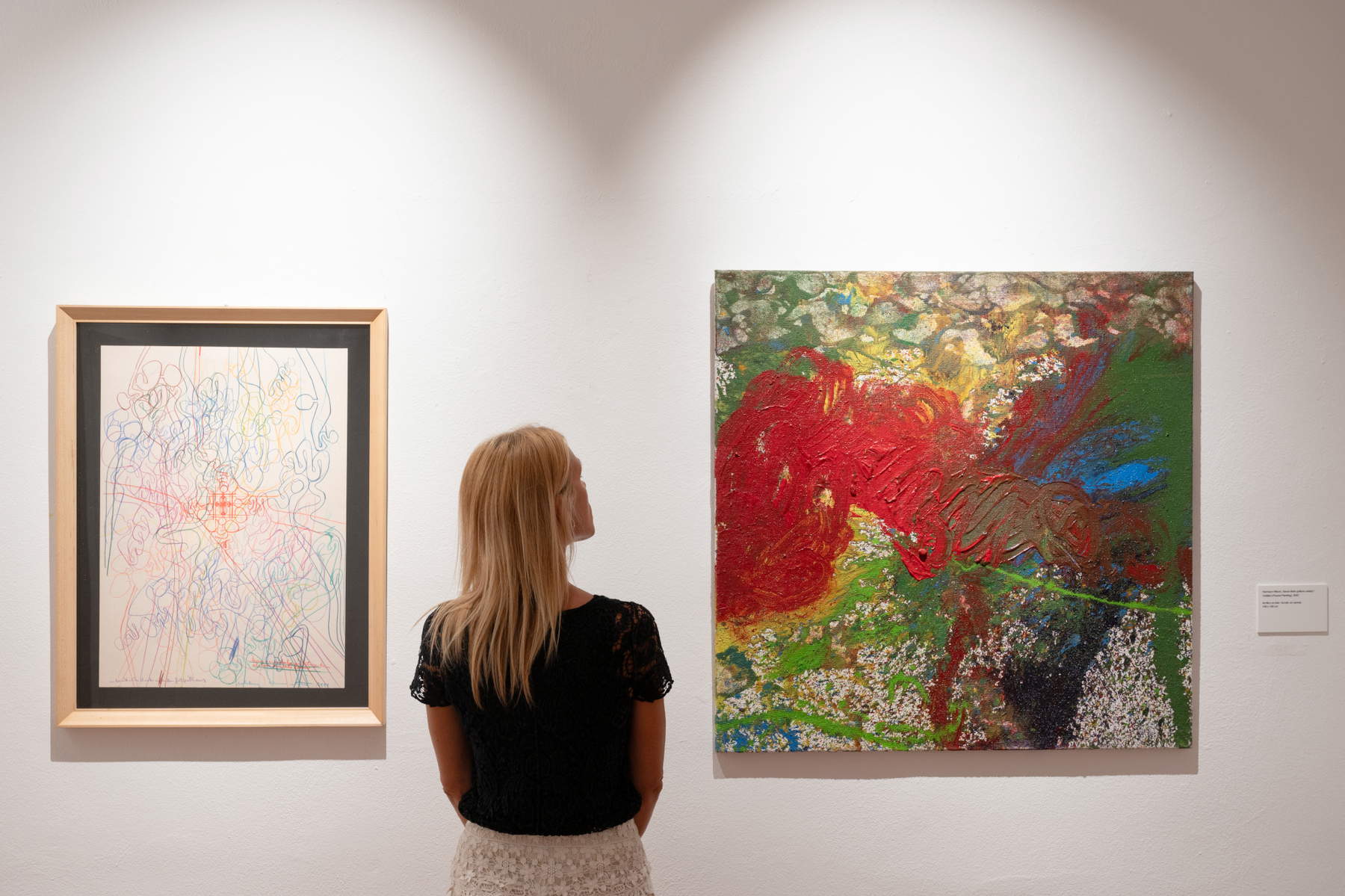In 1975, in his Prinzendorf Castle, Hermann Nitsch (Vienna, 1938 - Mistelbach, 2022) stagedAktion No. 50: a performance in which a naked, blindfolded man evoked the sacrifice of the Crucifixion, exposing his body to the pain of the world, a reflection of the pain of God who became man to save humanity from oblivion and denial.
Fifty years later, the Diocesan Museum of Brescia is dedicating to the artist the exhibition HERMANN NITSCH. Body-Sacred-Myth, open from Sept. 11 to Nov. 30, 2025, in which the profound link between the body and the sacred dimension, an inescapable key to the research of the founder ofViennese Actionism, is investigated. Curated by Ilaria Bignotti, in collaboration with the Nitsch Foundation in Vienna and the IAGA Contemporary Art gallery in Cluj-Napoca, the exhibition brings together a selection of large-scale works in which religious and mystical iconography is intertwined with the languages of theInformal, born as a desire to atone for the violence of the dictatorships of the 20th century.

Like a kind of anthology, the exhibition traverses more than forty years of research, from 1975 to 2017: from the vintage photograph documenting the crucifixion of Prinzendorf, to the large canvases of recent years, to the Relikt, the “relics” that Nitsch considered tangible evidence of collective tragedies to be preserved in memory. Among them: Untitled (Action Shirt) (2004), a red-soaked smock worn in a performance; Relict with Applications (2008), a collage on canvas with red chasuble, liturgical stoles, gauze and band-aids soaked in red fluid; Relikttuch (1998), blood on linen canvas; and St. Lucia 77. Blood. Victim. Operation (1977), with stole, gauze and acrylic color.
These works, tangible traces of Nitsch’s artistic liturgies, become monuments, that is, sites of the warning and remembrance of the Passion, the Holocaust and war. If Jackson Pollock unleashed the power of matter through dripping, Nitsch orchestrated rituals of collective catharsis, entrusting surfaces and bodies to theaction of dripping blood and color. Even where red is absent, the graphic sign is equally dramatic: as in the 1983 Crucifixion, a silkscreen print on an original shipwreck, or the two architectural drawings with the cross at the center of labyrinths traced in pastel, or the Conquest of Jerusalem, a monumental three-meter-wide silkscreen print on an original 1971 shipwreck, reissued by Nitsch in 2017 during a performance action.
Striking works, such as The Deposition (2006-2007), in which the deposed body of Christ emerges from intertwining forms that evoke bodily innards, or such as The Last Supper (1983, silkscreen print on original 1976-79 shipwreck), with anatomical and skeletal figures arranged along nearly four meters of surface, complete an itinerary that restores all the radicality and depth of Nitsch’s research.
Hours: Mondays, Thursdays, Fridays from 10 a.m. to noon and 3 to 6 p.m.; Saturdays and Sundays from 10 a.m. to 6 p.m. Closed Tuesdays and Wednesdays (with the possibility of group visits and workshops by appointment).



 |
| Over forty years of Hermann Nitsch's research on display in Brescia. |
Warning: the translation into English of the original Italian article was created using automatic tools. We undertake to review all articles, but we do not guarantee the total absence of inaccuracies in the translation due to the program. You can find the original by clicking on the ITA button. If you find any mistake,please contact us.